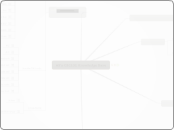Ali's CSC101 Knowledge Base
Ch. 1 Introduction to Computers
Why we Should Learn about Computers
Computer Categories
Super Computers
Ch. 3 Storage
Storage System Characteristics
volatility
Random vs. Sequntial access
Storage Media
Hardware
Ch. 4 Input and Output
Input Devices
Audio Input
Scanners and Readers
Pointing and Touching Devices
Output Devices
Display Devices
Printers
Audio Output
The World is Flat
Flatteners 8, 9, 10
Flatteners 4, 5, 6
Ch. 2 System Processing
Data and Program Represntation
Computers Language
Storage
Multimedia
translated to the machine language
then shown in the monitor
Inside the System Unit
the Motherboard
CPU
Different Types
Memory
ROM
RAM
Volatile
Nonvolatile
Register
Expansion Slots
ExpressCard Modules
Bus
Memory Bus
Frontside Bus
Expansion Buses
Ports
How the CPU works
FPU
ALU
Control Unit
The prefetch unit
decode unit
bus interdace unit
Machine Cycle
system clock
Future Trends
A view
Nanotechnology
Quantum
Optical Computers
